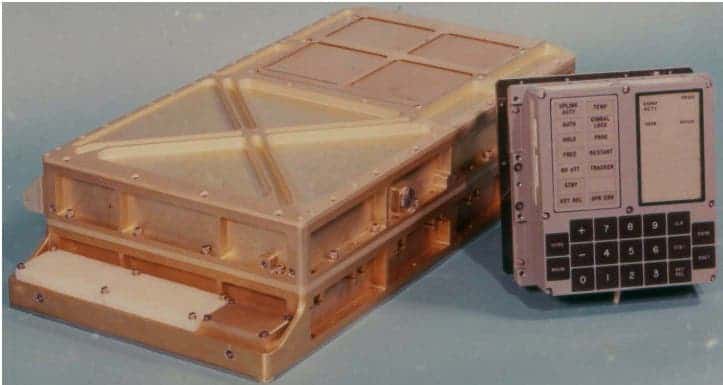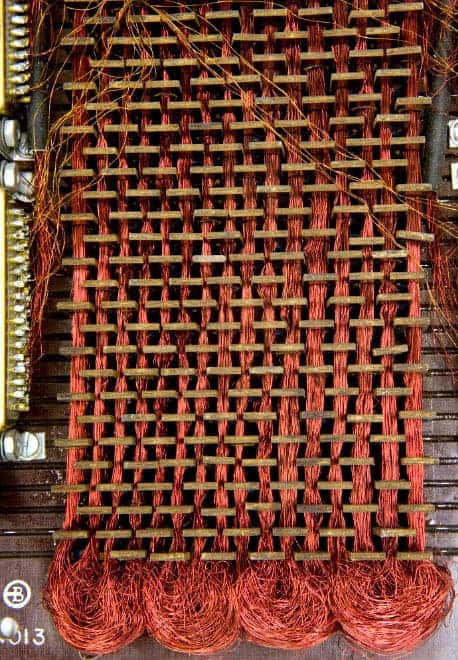This is the Apollo Guidance Computer’s read-only rope memory. That’s right — memory literally made from rope. Depending on how the rope was knit, a software program could be initiated.
It’s still binary programming, but the entire process was extremely laborious and slow. It could take months to weave an entire program. If a wire went through one of the circular cores, it was a binary one, if it went outside of them, it was a binary zero. It seems hard to even imagine this, but at the time, this was a great breakthrough. This was the equivalent of 72 KB of storage, which was almost 20 times higher data-per-volume than existing alternatives.
As for the Apollo Guidance Computers (AGC), they provided computation and electronic interfaces for guidance, navigation, and control of the spacecraft – as much as the day’s technology permitted it. Astronauts communicated with the AGC using a numeric display and keyboard called the DSKY (DiSplay&KeYboard, pronounced ‘DISS-key’), the whole technology being developed by MIT engineers. Another significant development is the fact that AGCs were the first computers to use integrated circuits.

So when someone tells you that people flew to the Moon using computers weaker than your cell phone — that’s an understatement. They flew to the Moon using a technology we’d have a hard time even imagining.







